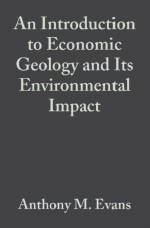Добрый день, Коллеги. Важное сообщение, просьба принять участие. Музей Ферсмана ищет помощь для реставрационных работ в помещении. Подробности по ссылке
An introduction to economic geology and its environmental impact / Введение в экономическую геологию и ее влияние на окружающую среду
Why is economic geology essential to our progress? It has been said that agriculture is the most basic of man's activities, but in this time of overpopulation and indeed in the preceding centuries it would have been impossible to feed the world's teeming millions without recourse to mining and the use of minerals and metals for ploughing, fertilization, harvesting, food preparation and so on. Indeed, of these two basic industries— agriculture and mining—mining is the older. It started some 500000 years ago when man commenced exploring for tool-making materials — flint, obsidian, quartzite were chipped and ground to sharp cutting edges. Early man found that some localities were richer than others and began to search for these richer deposits, to mine them, establish axe factories and to trade in the finished products. He soon developed an appreciation of their geological occurrence. For example, by 3 000 B.C. large underground flint mines were in operation at Grime's Graves in Norfolk, U.K. and it is clear that the miners had noted that particular horizons in the chalk host rock carried the best and most numerous flints.Stone tools continued to be refined and more uses found for this material, particularly when agriculture became important and milling equipment was required leading to the development of querns during the Neolithic era. In this period, clay and other materials began to be exploited for pottery manufacture. But older than these events was the exploitation of pigments both for painting cave walls and body decoration. Natural iron oxides (ochres) and iron-rich clays (umbers) were among the first to be used and mine workings in Swaziland have been carbon-dated at 40 000 B.C. Cinnabar (red mercury sulphide used as vermilion) was mined in central Turkey 8000 years ago. Wad (manganese oxides) was used for black, galena for grey (and as eye shadow by the ancient Egyptians). In St Jerome's Bible, Jezebel is recorded as painting her face with the black cosmetic stibio (stibnite). It has been suggested that efforts to purify pigments led to the discovery of smelting as Neolithic beads (c. 8000 years old) of smelted lead have been found in Turkey apparently predating any other smelting by a significant period.




